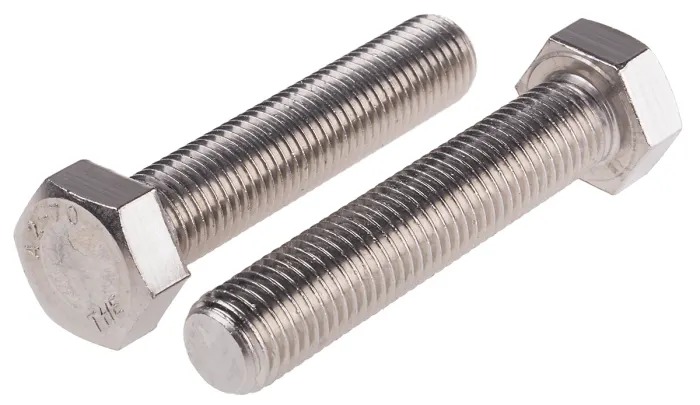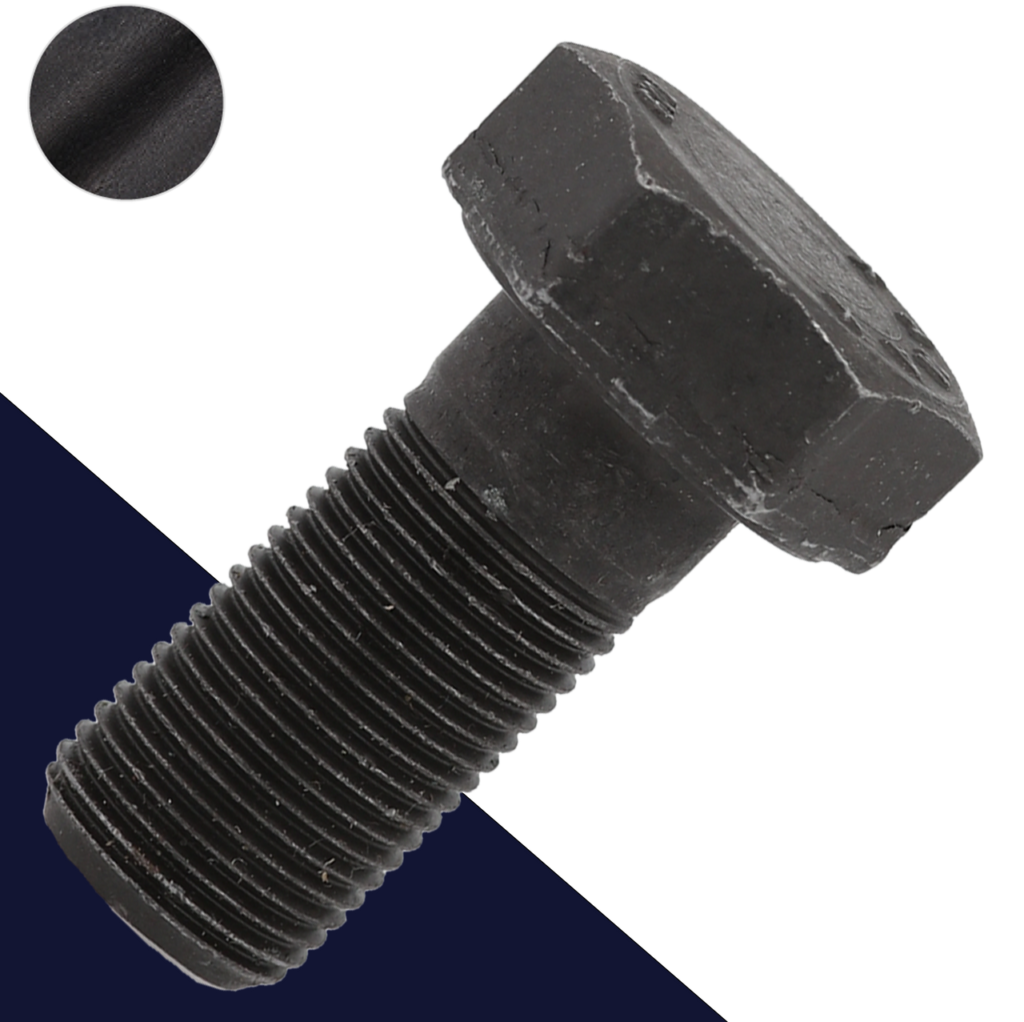Introduction
Fasteners are the unsung heroes of engineering, holding together everything from skyscrapers to car engines. Among these, bolts are critical for creating strong, reliable connections. Hex bolts, in particular, are one of the most widely used types due to their unique design and versatility. This article dives into what a hex bolt is, its types, materials, sizes, applications, and how to use it effectively. We’ll also explore how companies like XILUO contribute to producing high-quality hex bolts through precision mold manufacturing.
What is a Hex Bolt?
A hex bolt, also known as a hexagonal bolt or hex head bolt, is a fastener characterized by its six-sided (hexagonal) head. This design allows for easy tightening and loosening using standard tools such as wrenches, socket sets, or torque wrenches. Hex bolts feature machine threads, enabling them to be paired with a nut or screwed into a pre-tapped hole. According to industry standards like ASME B18.2.1, hex bolts are externally threaded fasteners typically tightened by torquing a nut, distinguishing them from similar fasteners like hex cap screws.

The hexagonal head provides six grip points, making it easier to apply torque from multiple angles compared to square-headed bolts. This feature, combined with their robust construction, makes hex bolts a staple in applications requiring high strength and reliability.
Types of Hex Bolts
Hex bolts come in several variations, each tailored to specific needs:
- Fully Threaded Hex Bolts: Threaded along their entire length, these are ideal for applications where the bolt is screwed into a tapped hole, such as in machinery. They ensure maximum thread engagement for secure fastening.
- Partially Threaded Hex Bolts: These have threads on only part of the shank, with an unthreaded portion under the head. The unthreaded section provides greater shear strength, making them suitable for use with a nut in structural applications.
- Tap Bolts: A subset of fully threaded hex bolts, tap bolts are designed specifically for tapped holes, often used in precision equipment.
- Structural Bolts (e.g., ASTM A325): These heavy-duty hex bolts are used in construction for high-strength connections, such as in bridges and buildings. They often feature a larger hex head for enhanced load distribution.
Each type serves distinct purposes, and selecting the right one depends on the application’s requirements.
Materials and Finishes
Hex bolts are manufactured from various materials to meet different environmental and mechanical demands:

- Steel: The most common material, with grades like ASTM A307 for general use and A325 for structural applications. Steel offers excellent strength but may require protective coatings.
- Stainless Steel: Used in corrosive environments, such as marine or outdoor settings, due to its rust resistance.
- Brass: Less common but used in applications requiring non-magnetic properties or aesthetic appeal.
Finishes enhance durability and performance:
- Zinc Plating: Provides corrosion resistance for indoor or mild outdoor use.
- Hot-Dip Galvanizing: Offers superior protection for harsh environments, such as coastal areas.
- Stainless Steel Finish: Naturally corrosion-resistant, ideal for long-term exposure.
These options allow hex bolts to be tailored to specific conditions, ensuring longevity and reliability.
Sizes and Standards
Hex bolts are available in a wide range of sizes to accommodate various applications. Metric sizes, per standards like DIN 931 (partially threaded) and DIN 933 (fully threaded), range from M4 to M20 and beyond. Imperial sizes, per ASME B18.2.1, typically range from 1/4″ to 2-1/2″ in diameter. Below is a sample size chart for imperial hex bolts based on ASME B18.2.1:
| Bolt Diameter | Body Diameter (Max) | Width Across Flats (Basic) | Width Across Corners (Max) | Height (Basic) |
| 1/2″ | 0.515 | 3/4″ | 0.866 | 11/32″ |
| 3/4″ | 0.768 | 1 1/8″ | 1.299 | 1/2″ |
| 1″ | 1.022 | 1 1/2″ | 1.732 | 43/64″ |
| 1 1/2″ | 1.531 | 2 1/4″ | 2.598 | 1″ |
Standard thread lengths also vary: bolts up to 6″ long typically have a thread length of (2 × diameter) + 1/4″, while longer bolts may have (2 × diameter) + 1/2″. These standards ensure consistency and compatibility across industries.
Uses and Applications
Hex bolts are incredibly versatile, finding applications in numerous sectors:
- Construction: Used to secure structural components like beams, columns, and trusses in buildings, bridges, and highways. Structural bolts like A325 are common in these settings.
- Machinery: Essential for assembling heavy equipment, where high torque and shear resistance are required.
- Automotive: Employed in engine assemblies, chassis construction, and suspension systems.
- Furniture: Used in heavy-duty furniture, such as industrial shelving or outdoor structures, for robust connections.
- Marine and Infrastructure: Stainless steel or galvanized hex bolts are used in docks and coastal structures to resist corrosion.
Their ability to handle significant tensile and shear forces makes them indispensable in high-load environments.
How to Use Hex Bolts
Using hex bolts is straightforward but requires the right tools and techniques:
- Tools Required:
- Wrenches: For manual tightening and loosening.
- Socket Sets: For faster, more precise torque application.
- Torque Wrenches: To apply specific torque values, critical in structural or automotive applications.
- Hex Keys or Ratchet Spanners: For additional flexibility in tight spaces.
- Installation Process:
- Align the holes in the materials to be joined.
- Insert the hex bolt through the holes.
- Secure with a nut (for through-hole applications) or screw into a tapped hole.
- Tighten using the appropriate tool, ensuring proper torque to avoid over-tightening or stripping.
Proper installation ensures a secure connection and prevents issues like bolt failure or material damage.
Comparison with Other Fasteners
Hex bolts are often confused with similar fasteners, but key differences set them apart:
- Hex Cap Screws: These are designed to be screwed into a pre-tapped hole without a nut. They typically have a washer face under the head and a chamfered point, unlike hex bolts, which lack these features. Hex cap screws are tightened by torquing the head, while hex bolts rely on a nut.
- Carriage Bolts: These have a round head with a square section underneath to prevent rotation during tightening. They are less versatile than hex bolts and are often used in wood applications.
- Structural Bolts vs. Standard Hex Bolts: Structural bolts, like A325, are a subset of hex bolts with specific strength requirements and larger heads for heavy-duty applications.
Understanding these distinctions helps in choosing the right fastener for a project, avoiding costly mistakes.
Advantages of Hex Bolts
Hex bolts offer several benefits that make them a preferred choice:
- Strength and Durability: Capable of withstanding high tensile and shear forces, ideal for heavy-duty applications.
- Ease of Use: The hexagonal head provides six grip points, allowing for easy tightening with standard tools from multiple angles.
- Versatility: Available in various sizes, materials, and finishes, hex bolts suit a wide range of industries and environments.
- Cost-Effectiveness: Widely available and relatively inexpensive, they offer excellent performance for the price.
These advantages make hex bolts a go-to fastener for engineers and builders worldwide.
Conclusion
Hex bolts are a cornerstone of modern engineering, offering unmatched strength, versatility, and ease of use. From securing skyscrapers to assembling machinery, their role is critical across industries. By understanding their types, materials, and applications, you can select the right hex bolt for any project. Companies like XILUO play a vital role in ensuring the quality of these fasteners by producing precision molds that meet stringent standards.
About XILUO
XILUO, part of Dongguan Xiluo Mold Technology Co., Ltd, is a global leader in high-precision fastener molds, with over 23 years of experience. Specializing in molds for hex bolts and other fasteners, XILUO offers custom solutions, OEM/ODM services, and one-stop R&D and production. Our state-of-the-art 10,000㎡ factory and advanced equipment ensure top-quality molds that enhance fastener durability and precision. Visit XILUO’s website to request a quote and discover how we can support your fastener manufacturing needs.




